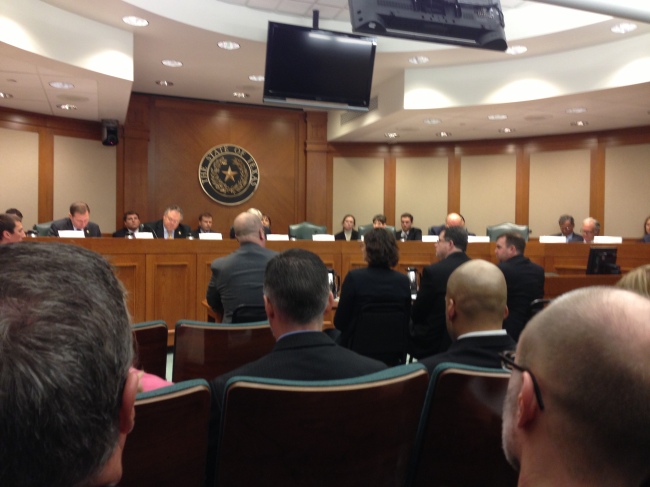Yesterday, November 25th, in a fairly contentious day at the Capitol, Senate Committee on Natural Resources Chair Troy Fraser grilled the two Public Utility Commissioners that made a decision earlier this year to require a mandated reserve margin which could lead to the implementation of a “capacity” market in Texas. He was joined both by conservative Senators like San Antonio Senator Donna Campbell and more liberal senators like Senator Rodney Ellis and Senator and Lt. Governor candidate Leticia Van De Putte (D-San Antonio), who all questioned the wisdom and authority of the PUC to consider major changes to the wholesale energy market.
For a pretty good report on the days events courtesy of the Texas Tribune, see here.
So what is it exactly that had the Senators — conservative and less-so — so riled up, as well as one of the three PUC commissioners, and many of the invited witnesses, including the American Natural Gas Alliance, Valero, the Texas Association of Manufacturers, the Cities served by ONCOR, Walmart and the Texas Public Policy Foundation, among others? A preliminary decision by two of the three PUC commissioners — Chair Donna Nelson and newbie Brandy Marty — to declare in a non-binding vote that they were in favor of a required reserve margin, and the suggestion by Nelson and many electric generators that the best way to get there is by the imposition of a forward capacity market — which pays generators (and also potentially companies reducing energy demand through demand response) money for having the capacity to deliver energy as well as paying them for any energy they actually produce. This is common in some other markets in the United States. Analysis shows that such a market could be very costly — upwards of $4 billion per year — with no actual guarantee that it would lead, as Fraser put it, to “new steel in the ground.” Instead, existing resources like large inefficient dirty coal plants could get paid for just hanging around.
In addition to the cost and effectiveness of a capacity market, Fraser and even PUC Commissioner Ken Anderson — a capacity market critic — questioned whether PUC had the authority in statutes to change the market structure without legislative direction to do so. Both Marty and Nelson argued they did since they were charged with protecting consumers and insuring reliability, but Fraser stated that previous discussions on the subject had led to an understanding that the Energy-only Texas market decision was made in 1999, and only legislative action could change it. All Senators who spoke told the PUC to tread carefully and seek legislative guidance before adopting changes. Fraser in particular admonished Nelson and Marty for not “picking up the phone” before their vote to require a reserve margin. (Note; The vote was really an indication of their preference and no actual changes have been made to create a required reserve margin — still it was an indication of their preferences.)
In the meantime, the Commission has asked stakeholders for public input on a variety of questions, and will be holding a workshop on January 29 and 30th. The Sierra Club has been involved in the discussion, and has argued that a capacity market is not needed and that relatively minor changes to the energy-only market can help move Texas toward a clean energy future. One of our main efforts has been to change the way ERCOT – the Electric Reliability Council of Texas — projects our supply and demand of energy. We argue that ERCOT often overestimates demand — in part because they have not incorporated the gains made through energy efficiency and demand response — and underestimates supply — the amount of energy produced by wind and distributed solar to the grid during peak times of use. ERCOT is slowly changing its projections because of our and other efforts and it could be Texas discovers our supposed crisis in reliability has more to do with the amount of money big companies like Luminant want to make to pay down their debts, and less about ensuring the reliability of our energy markets. In the meantime, development of new rules and protocols to help loads, demand response, energy efficiency, solar and energy storage to participate more actively in our energy-only market can help meet our demand.



